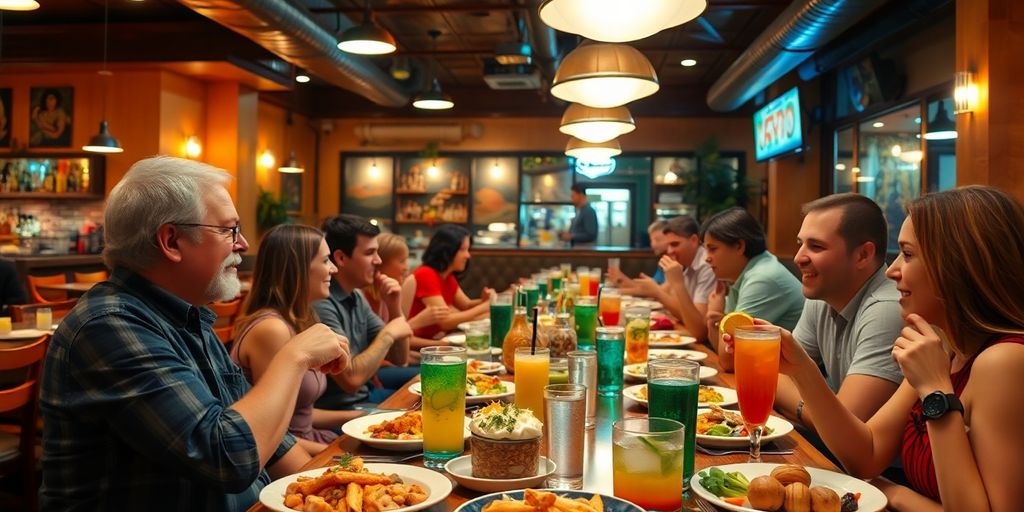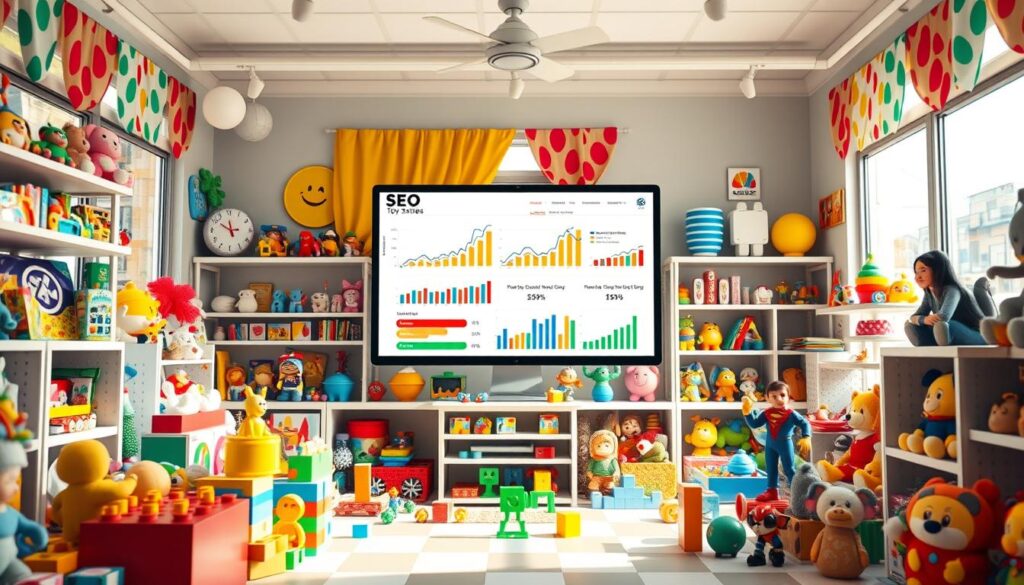SEO, or Search Engine Optimization, might sound like a techy term, but it’s really all about getting your restaurant noticed online. For casual dining spots, being easy to find on the internet can mean more people walking through the door. With so many folks searching for places to eat on their phones or computers, having a solid SEO strategy helps your restaurant stand out. It’s not just about having a pretty website; it’s about making sure your place pops up when someone nearby is looking for a bite to eat. Let’s dive into some key takeaways on how to make SEO work for your casual dining restaurant.
Key Takeaways
- SEO helps casual dining restaurants get noticed online, bringing more diners through the door.
- Creating quality content, like blog posts and menu showcases, can improve your restaurant’s search ranking.
- Local SEO is crucial for attracting nearby customers, so make sure your Google My Business profile is up-to-date.
- Social media can boost your SEO efforts by driving traffic to your website.
- Building a strong backlink profile improves your site’s authority and helps it rank better in search results.
Understanding SEO for Casual Dining Restaurants

Defining Search Engine Optimization
Search Engine Optimization, or SEO, is all about making sure your restaurant pops up when people search online. It involves tweaking your website so search engines like Google know exactly what your place is about. This means using the right keywords, making sure your site loads quickly, and ensuring it’s easy to navigate on both computers and phones.
Importance of SEO in the Restaurant Industry
In the restaurant world, SEO is a big deal. Why? Because most folks search online before picking a place to eat. If your restaurant doesn’t show up in those searches, you’re missing out on a ton of potential customers. Having a solid SEO strategy can really boost your visibility, drawing in more diners without having to spend big on ads.
Getting your restaurant noticed online is like having the best spot on a busy street – it brings in more foot traffic and helps build a loyal customer base.
Key Components of Effective SEO
To nail SEO, you need to focus on a few key things:
- Keyword Research: Find out what terms people are using to find restaurants like yours.
- Local SEO: Make sure your restaurant shows up in local searches. This includes having an up-to-date Google My Business profile.
- Content Creation: Regularly post engaging content, like blog posts or updates about your menu.
- Website Optimization: Ensure your website is fast, mobile-friendly, and easy to use.
By focusing on these elements, you can improve your restaurant’s online presence, making it easier for potential diners to find you when they’re hungry. For more tips on how to enhance online visibility, check out strategies that don’t rely on paid ads.
Creating High-Quality Content for Your Restaurant
Engaging Blog Posts and Articles
Starting a blog can be a game-changer for your restaurant’s online presence. Think of it as a way to connect with your customers beyond the menu. Write about things that matter to your brand—like the story behind your ingredients or upcoming events at your place. Blogs can boost your search rankings, bringing more eyes to your website. You could discuss local food trends or even spotlight your chef’s favorite recipes. The key is to keep it interesting and relevant.
Showcasing Menu Items Effectively
When it comes to your menu, presentation is everything. Use descriptive language that makes each dish sound irresistible. Instead of just listing ingredients, tell a little story about the dish. Highlight the freshness or the unique cooking method. Maybe even share a quick tip on how to enjoy it best. This not only tempts the taste buds but also gives your menu a personality that’s hard to resist.
Utilizing Customer Testimonials
Customer reviews are like gold for your restaurant. They offer real, relatable insights into what people love about your place. Encourage happy diners to leave a few words about their experience. You can showcase these testimonials on your website or social media. It builds trust and gives potential customers a glimpse of what they can expect. Plus, it’s a great way to engage with your community and show that you value their feedback.
Optimizing Your Website for Local Search
Importance of Local SEO
Local SEO is like the secret sauce for restaurants wanting to be found by nearby customers. When folks are searching for a place to eat, they often look for spots close by. Optimizing for local search ensures that your restaurant pops up in these searches, driving more foot traffic through your doors. You want to be the first name they see when they search "best pizza near me" on their phones.
Google My Business Optimization
Setting up and optimizing your Google My Business (GMB) profile is a must. It’s not just about having a listing; it’s about making sure every detail is spot on. Include your restaurant’s hours, address, and contact info. Don’t forget to upload some mouth-watering photos of your dishes. Regularly update your GMB with posts about specials or events to keep it fresh and engaging. This helps in making your business look legit and can boost your visibility significantly.
Encouraging Customer Reviews
Customer reviews can make or break your online presence. Encourage your diners to leave reviews on platforms like Google, Yelp, or TripAdvisor. Positive reviews not only improve your reputation but also enhance your local search rankings. Maybe offer a small discount or a free dessert for those who take the time to write about their experience. Remember, more reviews mean more people checking out your place, and that’s always a good thing.
Local SEO is essential for any restaurant looking to stand out in a crowded market. By focusing on local search optimization, you can attract more diners and boost your restaurant’s visibility without spending a fortune on ads. It’s about being in the right place at the right time when someone is hungry and searching.
Leveraging Social Media for SEO Benefits

Choosing the Right Platforms
Social media is a bustling marketplace, and picking the right spot to set up shop can make all the difference. For restaurants, Instagram and Facebook are top picks because they are visually driven platforms. Sharing mouth-watering photos of your dishes or a cozy shot of your restaurant’s interior can pique interest. Twitter, on the other hand, is great for quick updates and engaging directly with customers. Finding the right platform helps you connect with your audience where they hang out the most.
Engaging with Your Audience
It’s not just about posting content; it’s about starting a conversation. Responding to comments, asking questions, and even running polls can help engage your followers. People love to feel heard, and when you interact with them, it builds a sense of community. Here’s a simple list to keep your engagement high:
- Reply to comments and messages promptly.
- Ask open-ended questions to spark discussions.
- Share user-generated content to show appreciation.
Sharing Promotions and Events
Social media is a fantastic place to spread the word about special deals or events. If you’re hosting a live music night or offering a weekend discount, let your followers know! Creating buzz around events encourages more foot traffic. Consider using these strategies:
- Post event details with eye-catching graphics.
- Use countdowns or reminders to build anticipation.
- Offer exclusive social media coupons.
Social media is not just a tool for sharing; it’s a stage for storytelling. When restaurants use it effectively, they don’t just promote—they build a brand narrative that resonates with their audience.
By incorporating these strategies, restaurants can enhance their online presence and drive more customers through their doors. Check out more about social media marketing strategy to boost your restaurant’s visibility.
Building a Strong Backlink Profile
Understanding Backlinks and Their Importance
Backlinks are like a vote of confidence from other sites. When a reputable website links to your restaurant’s page, it’s as if they’re saying, “Hey, check this place out!” This signals to search engines that your site is trustworthy and relevant. Building a solid backlink profile is crucial for boosting your search rankings. Think of it as getting a thumbs-up from the internet community.
Strategies for Acquiring Quality Backlinks
Getting quality backlinks isn’t just about quantity; it’s about the right connections. Here are some strategies:
- Guest Blogging: Write articles for food blogs or local news sites. This not only gets your name out there but also earns you valuable links.
- Local Directories: Ensure your restaurant is listed in local directories like Yelp or TripAdvisor. These platforms often rank high in search results.
- Partnerships and Sponsorships: Collaborate with local businesses or sponsor community events. These partnerships can lead to mentions and links on their websites.
Monitoring Your Backlink Health
Just like keeping tabs on your health, you need to monitor your backlinks. Use tools to check their status regularly. Are they still active? Have any been lost or broken? Keeping your backlink profile healthy is important for maintaining your online reputation.
"A healthy backlink profile is like a well-tended garden; it requires regular care and attention to flourish."
By focusing on these aspects, your casual dining restaurant can establish a strong online presence. For more detailed strategies, consider reviewing this guide on optimizing your restaurant’s online presence.
Utilizing Visual Content to Attract Diners
Importance of High-Quality Images
In the world of casual dining, a picture is worth more than a thousand words. High-quality images of your dishes can make a significant impact. They don’t just show what’s on the menu; they tell a story of taste and experience. Images should highlight the freshness and appeal of the food, enticing potential diners to choose your restaurant over others. When customers see a beautifully plated dish, they’re more likely to imagine themselves enjoying it. This visual appeal is crucial in drawing in new patrons.
Creating Engaging Videos
Videos are a fantastic way to showcase the personality of your restaurant. Whether it’s a behind-the-scenes look at how a signature dish is made or a quick tour of the dining area, videos can capture the essence of your brand. They offer a dynamic way to connect with your audience, making them feel like part of your restaurant’s story. Consider short clips that highlight your chef’s skills, the ambiance of your dining area, or even customer testimonials.
Showcasing Restaurant Ambiance
The ambiance of a restaurant is just as important as the food. Lighting, decor, and the general vibe all contribute to a diner’s overall experience. Use visual content to convey the atmosphere of your space. Is it cozy and intimate, or lively and vibrant? By showcasing your restaurant’s unique environment, you help potential customers envision their dining experience with you.
The power of visual content in the restaurant industry cannot be overstated. It’s not just about showing what you offer but creating a desire to experience it firsthand. For more insights on how to effectively utilize these strategies, check out restaurant digital marketing techniques that can help boost your establishment’s visibility and customer engagement.
Implementing Email Marketing Strategies
Building an Email List
Email marketing is a great way to keep your customers in the loop about what’s happening at your restaurant. Start by building an email list. You might offer a small discount or free appetizer to encourage sign-ups. Make sure your sign-up form is easy to find on your website and social media pages.
Crafting Engaging Newsletters
Once you have your list, it’s time to get creative. Your newsletters should be more than just advertisements. Share stories about your team, updates on new menu items, or sneak peeks of upcoming events. The goal is to keep your content fresh and engaging so that your subscribers look forward to your emails.
Promoting Special Offers and Events
Use your email list to announce special offers and events. Whether it’s a weekend brunch special or a live music night, let your subscribers be the first to know. This not only makes them feel valued but also encourages repeat business.
Email marketing isn’t just about selling; it’s about building a relationship with your customers. By sharing valuable content and exclusive offers, you can create a loyal customer base that keeps coming back for more.
Conclusion
So, there you have it. SEO might sound like a techy buzzword, but for casual dining spots, it’s a game-changer. It’s not just about showing up on Google; it’s about getting more folks through your doors. By using the right keywords, keeping your website in tip-top shape, and making sure you’re visible on social media, you’re setting your restaurant up for success. Plus, with tools like Ranktracker, you can keep an eye on how you’re doing and tweak things as needed. In a world where everyone is searching online for their next meal, having a solid SEO strategy is like having a secret weapon. So, dive in, get your hands dirty, and watch your restaurant thrive.
Frequently Asked Questions
What is SEO and why is it important for restaurants?
SEO, or Search Engine Optimization, is how you make your website show up higher in search results. It’s important for restaurants because it helps more people find your place online, bringing in more customers.
How can I use social media to boost my restaurant’s SEO?
You can share your restaurant’s photos, events, and updates on social media platforms like Instagram and Facebook. Engaging with your audience there can drive more traffic to your website, improving your SEO.
What are backlinks and why do they matter?
Backlinks are links from other websites to your site. They’re important because they show search engines that your site is trustworthy and popular, which can help improve your search rankings.
Why should I focus on local SEO for my restaurant?
Local SEO helps your restaurant show up in search results for people nearby. This is crucial because it makes it easier for local customers to find and visit your restaurant.
How can customer reviews help my restaurant’s SEO?
Positive customer reviews can boost your restaurant’s reputation and improve your local search rankings, making it easier for new customers to find you.
What role does high-quality content play in SEO?
Creating engaging and informative content, like blog posts or videos, can attract visitors to your website. This keeps people interested and encourages them to share your content, which can improve your SEO.






